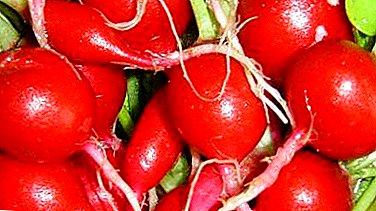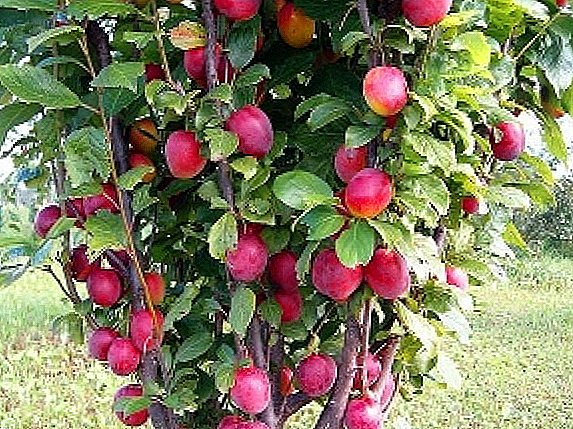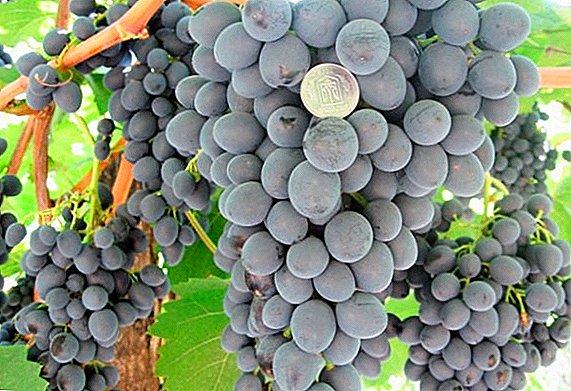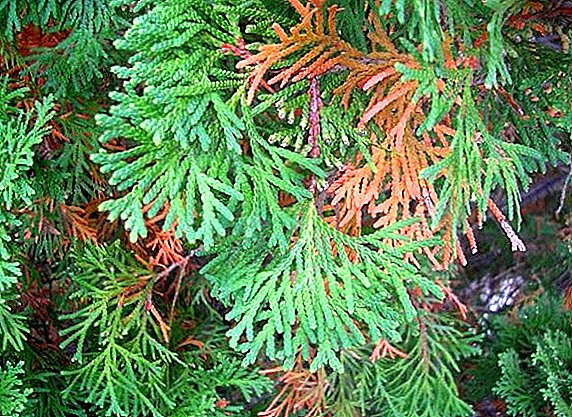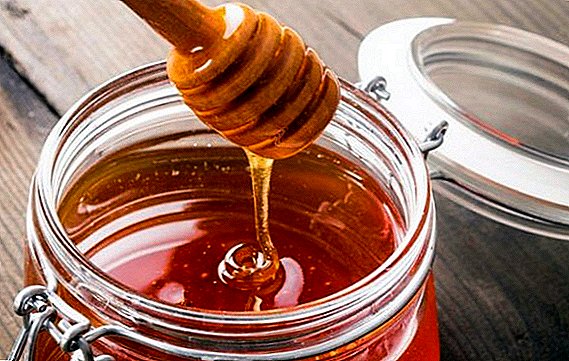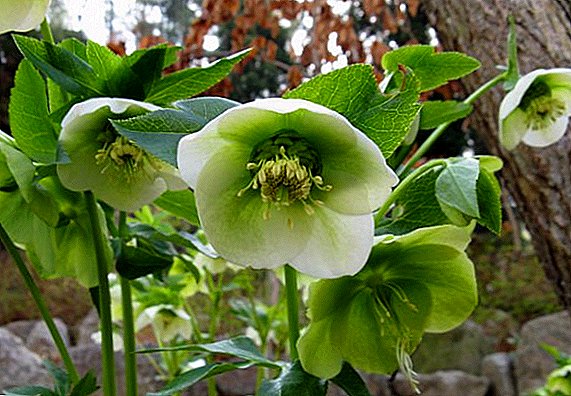 Despite the rapid development of modern medicine, the popular methods of treatment and prevention of various diseases still firmly hold positions in the lives of many people. And this is not surprising, since many generations studied the plant world and made detailed recommendations on the use of almost every plant. This also applies to Caucasian hellebore, a plant that, if properly used, can help a person solve a lot of health issues.
Despite the rapid development of modern medicine, the popular methods of treatment and prevention of various diseases still firmly hold positions in the lives of many people. And this is not surprising, since many generations studied the plant world and made detailed recommendations on the use of almost every plant. This also applies to Caucasian hellebore, a plant that, if properly used, can help a person solve a lot of health issues.
Description
Caucasian hellebore - This is a perennial plant that has unique properties. Reaches 25-50 cm in height, has a simple stalk with a small branching and long-leaf opposite leaves. Flower stem is strong and without foliage. Large flowers have a pale color, and the fruit is a dry leathery leaflet.

Blossoms from March to the end of June. There is a plant in the Adygei forests and in the Caucasus. It grows predominantly on the slopes, edges and gorges, choosing places among other shrubs.
Did you know? Known to science is the fact that half of the long-livers of the planet live in the Caucasus. In their way of life there are many aspects that improve health and prolong life: folk cuisine, pure nature, and, of course, the secrets of medicine of previous generations.
Composition
The composition of this plant is not established by scientists to the end, but many of its components have been identified and their properties have been studied:

- Korelborin K and Korelborin P help with circulatory disorders;
- steroid saponins help with respiratory problems;
- fatty oils promote accelerated regeneration;
- alkaloids, depending on the dose, act stimulantly or depressingly on the central nervous system;
- antraglycosides have a mild laxative effect.
- flavonoids strengthen blood vessels;
- coumarins inhibit tumor cells.
Did you know? The first detailed scientific work, telling about medicinal plants, and surviving to this day, belongs to the pen of Hippocrates himself. The scientist described in his work 236 herbs used in medicine at that time.
Beneficial features
A diverse chemical composition allows the plant to be used for various therapeutic purposes. The mention of this grass is still in the most ancient medical teachings, and there are many legends and stories about its abilities. Previous generations believed that the hellebore could cure almost all ailments.

In practice, the plant has been identified such useful properties:
- improves heart function, reduces the risk of heart failure, provides heart muscle with blood flow;
- prevents the occurrence of vascular disorders;
- normalizes blood pressure (with hypertension);
- has a calming and diuretic effect;
- removes sand, salts and small stones from the kidneys and urinary tract;
- used in complex treatment of hemorrhoids, pleurisy, tuberculosis, paralysis;
- soothes pain in the joints, it is especially effective in osteochondrosis;
- used in the treatment of tumors;
- cleans the intestines, removes various slags and toxins from the body;
- relieves headaches caused by concussions;
- treats migraines, melancholy, dementia, insomnia;
- with epilepsy significantly reduces the frequency of attacks;
- normalizes metabolism, thereby regulating weight.
In addition to the hellebore, oregano (oregano), chervillo, caraway, rocambol, melon, sucker, hops, chislitz, calendula and buttercups also have a positive effect on the cardiovascular system.
Application
A medicinal plant is prescribed by a doctor for the treatment of many different diseases, and in each individual case the application technology has its own characteristics. It is important to remember that any use of a plant should be initially negotiated with your doctor.

- Slimming. Using plants for weight loss due to the fact that it is delicate, but very cleanses the intestines. Apply the infusion of hellebore preferably in the morning on an empty stomach (for this it must be prepared in the evening). The initial dosage should be minimal with a gradual increase. The course of treatment is 6 months, after which it is necessary to take a break of not less than 30 days. If necessary, the course is repeated in the same way.
Other plants also have medicinal properties, such as lungwort, laconosa, savory, white silverweed, marsh wild rosemary, peppermint, anise, and cholstyanka.
- Arthritis, rheumatism, arthrosis and other diseases of the joints are perfectly treated with hellebore ointment. Rub ointment is necessary in problem areas according to the instructions (depending on the severity of the disease). The active components of the plant regulate the water-salt balance, which makes it easier, if not impossible, to eliminate pain and discomfort. To achieve a positive result, regularity and adherence to use are important. There is, for example, such a recipe for ointment: 2 tsp. infusion freezer, 2 tbsp. l Hypericum, 1 tbsp. l yarrow, 1 tbsp. l sage, 1.5 tbsp. l Vaseline - herbal ingredients are ground and added to petroleum jelly. Store the tool should be in a dark cool place.

- A stomach ulcer. The plant cleans the stomach, in the process which kills bacteria that cause ulcers. The intestinal function is also normalized, the pain syndrome decreases, ulcers heal faster, and the tissues regenerate better. For this disease, an infusion of a plant is used (more often in combination with other plants), which must be drunk at 0.5 cups 3 times a day half an hour before meals. The course of treatment usually lasts 1.5-2 months.
- Liver diseases. With this type of ailments, root powder is taken on an empty stomach (50 mg each). The course can last from 1 month to 1 year, depending on the individual needs of the patient.

In case of liver diseases they also consume: aloe, hibiscus, white currant, fennel, amaranth thrown back, canuper, momordik, Phrygian cornflower, propolis tincture.
- Oncological diseases. The plant is well helps with cancer in the initial stages. To do this, take root powder (half a mustard spoon mixed with 50 ml of water) 1 time per day 60 minutes before meals. As you get used to the dose of medicine increases. The maximum possible course of treatment is 1 year, after which you should take a break for 3-4 months.
- To cleanse the blood. For this purpose, the leaves of hellebore (both dry and fresh). The leaves must be crushed and grind with sugar. You need to start with small doses, gradually increasing (the maximum permissible dose per day - 4 mg).

- Soothing CNS: 50 mg of powder from the dry roots of the plant mixed with half a teaspoon of liquid honey. Take overnight. The mixture will ensure a calm and deep sleep. The maximum duration of admission - six months. After that - a break lasting at least 1 month (to eliminate addiction). It is necessary to take very carefully, as the plant dulls the reaction, which is very important for people using personal transport.
- Stimulation of the immune system: mix in equal quantities the leaves and root of the plant, ground into powder. Take the powder in its pure form 1 time per day. The maximum allowable portion is 2 grams. Course duration - no more than 2 months after which 1 month break.


Important! Caucasian hellebore is poisonous! Cardiac glycosides, which are in its composition, with excessive or incorrect use have a toxic effect.
Harm and contraindications
Since hellebore is a poisonous medicinal plant, there are some contraindications to its use. Grass can not be consumed if you have these diseases:

- Coronary heart disease.
- Myocardial infarction.
- Atrioventricular block.
- Aortic defects.
- Endocarditis.
- Paroxysmal tachycardia.
- Liver damage.
For the treatment of myocardial ischemia, use boxwood, bee necrosis, motherwort.
Also, hellebore cannot be used by pregnant and lactating women and children under 14 years of age.
Without contraindications, it is necessary to strictly observe the dosage. Overdose can experience the following symptoms:

- tinnitus;
- vomiting;
- intense thirst;
- throat swelling;
- decay of cardiac activity.
Important! The use of hellebore or drugs based on it is possible only with the permission and under the supervision of a doctor.
How to use
Various medicinal forms of plants have distinctive properties and indications for use:

- The root has a strong effect on the central nervous system, helps to enhance the contractile properties of the myocardium, is effective in epilepsy. Getting into the human stomach, fully retains its properties.
- Oil used to remove toxins and metabolic products from the body, it is indicated for people with overweight and impaired lipid metabolism. It is used externally for rhinitis and chronic sinusitis, as well as for relieving pain in the joints and spine. You can find this oil in a pharmacy or specialty stores.
Tibetan lofant, white mariya, dried bananas, home fern, lagenaria, spinach, broccoli, amaranth, horseradish, Chinese cabbage, nectarines, plums and tomatoes will help to remove toxins from the body.
- Infusion prepared from the root of the plant and used in many diseases. To prepare, take 10 grams of well chopped and dried root and pour 0.5 liters of boiling water. All this is necessary to wrap up and put it in a dark place for 2 hours. After filtering and use according to medical recommendations, depending on the type of disease.

- Ointment It has a strong therapeutic effect in violation of the musculoskeletal system, joints. Prepare the ointment can be both independently and buy at the pharmacy.
Stocking
For therapeutic purposes, harvester roots are harvested. This should be done at the beginning of autumn, right after the seeds have crumbled. Harvesting has its own rules and sequence of actions:

- gently pry or dig up the plant without damaging the root system;
- cut off the upper part with a knife (leaves and flowers);
- remove dirt and damaged parts from the root;
- Rinse the workpiece thoroughly with cold water, then review it again for damaged parts;
- thicker and larger roots should be cut into strips 0.5 cm thick (everything will dry out evenly);
- spread out raw materials on thick paper or fabric, putting a dense base;
- dry in a well-ventilated area (preferably on the veranda or attic). It can also be dried in an oven or oven, but the temperature should not exceed 40 degrees;

- when properly dried, the root will have a brownish color on the outside and cream on the cut. The root has an unpleasant smell and bitter taste;
- Store dried blanks in tightly closed glass containers or in bags of natural fabric. The maximum shelf life is 3 years.
Important! When the drying temperature is above 40 degrees, the composition of the root breaks down the glycosides and the beneficial properties disappear.
When used properly, after consulting a doctor, a plant such as Caucasian hellebore can help you solve many more or less serious problems of your health in a natural way. It is important not to forget the dosage and safety measures which will save the body from unnecessary side effects.


